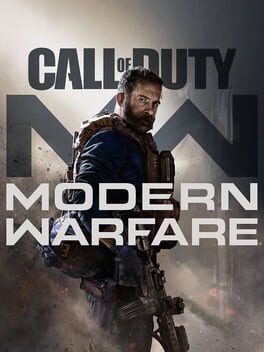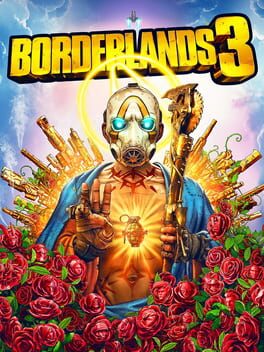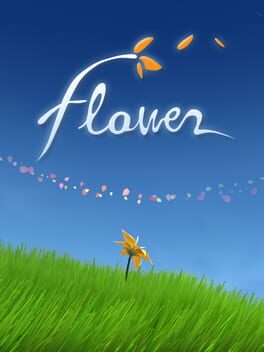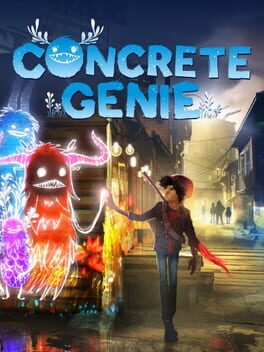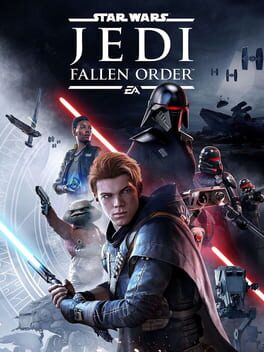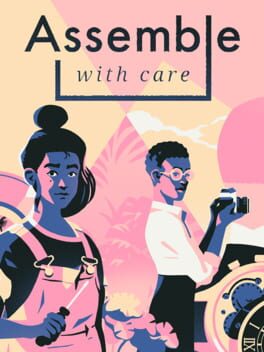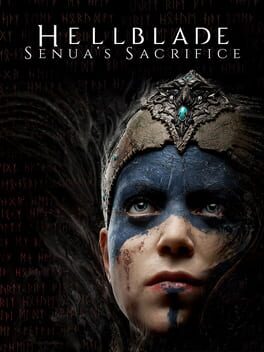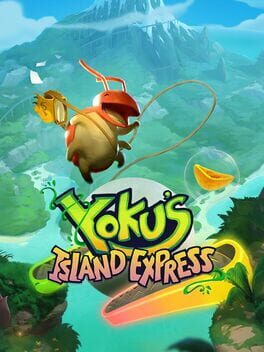cjfelty3396
BACKER
1998
I wish I was old enough to appreciate Metal Gear Solid in 1998, at its distinct moment in video game history. Thus was my primary thought at nearly every moment of MGS, as Hideo Kojima’s masterpiece still screams of innovation more than 20 years later.
After adjusting to the distinct visuals of a PlayStation era game, I found myself enamored with MGS’ moment-to-moment gameplay. Much of the games’ uniqueness lies in its answers to technical limitations: off-screen enemies demanding a slow stealthy approach, puzzle elements hidden unless viewed in first-person, and legitimately terrifying boss fights because the bosses always seem one-step ahead of the player. Even the almost-excessive back tracking that prolongs the game feels rewarding and realistic for an observant player who pays careful attention to every environment.
If the gameplay mechanics made the game fun to play, the entire experience was elevated by the game’s surprisingly complex (and understandable) story for a PS1 game! First things first, the story operates with the subtle, nuanced dialogue of an anime—In other words, it beats you over the head with themes of love and death. This broad-stroke painting of such human themes is what gives the game so much draw, however, and somehow through the thematic clubbings, Kojima delivers a nuanced critique of American exceptionalism and the military-industrial complex. To do so with such a character-based game deserves the highest praise.
I’m not sure whether MGS is a 5/5 only when taken in its historical context, or if it truly stands the test of time. Nevertheless, this game gets my utmost recommendation for anyone interested in video game history, or just getting a glimpse at the mind of one of the Industry’s leading visionaries!
After adjusting to the distinct visuals of a PlayStation era game, I found myself enamored with MGS’ moment-to-moment gameplay. Much of the games’ uniqueness lies in its answers to technical limitations: off-screen enemies demanding a slow stealthy approach, puzzle elements hidden unless viewed in first-person, and legitimately terrifying boss fights because the bosses always seem one-step ahead of the player. Even the almost-excessive back tracking that prolongs the game feels rewarding and realistic for an observant player who pays careful attention to every environment.
If the gameplay mechanics made the game fun to play, the entire experience was elevated by the game’s surprisingly complex (and understandable) story for a PS1 game! First things first, the story operates with the subtle, nuanced dialogue of an anime—In other words, it beats you over the head with themes of love and death. This broad-stroke painting of such human themes is what gives the game so much draw, however, and somehow through the thematic clubbings, Kojima delivers a nuanced critique of American exceptionalism and the military-industrial complex. To do so with such a character-based game deserves the highest praise.
I’m not sure whether MGS is a 5/5 only when taken in its historical context, or if it truly stands the test of time. Nevertheless, this game gets my utmost recommendation for anyone interested in video game history, or just getting a glimpse at the mind of one of the Industry’s leading visionaries!
2018
Minit is the perfect little game—demanding a player’s fullest attention for a short amount of time. The game’s gameplay hook is simple—you have one minute to solve a puzzle, find a new safehouse, or acquire a necessary item. At the end of your minute, you begin again from the last safehouse you stepped in, slowly chipping away at the larger narrative of the game.
My first playthrough of the game clocked in at 54 minutes, with only 8 of 18 items collected—a quick glance at an online guide revealed far greater depth and customizability that guarentees I will return to the game to discover all it has to offer.
Minit’s concept is not new, but it is brilliantly executed with the shortest clock in the genre—everything is well-designed to hook the player into “just one more life.” Minit’s worth is not in its technical prowess, but it goes far beyond expectations for a quaint little game.
My first playthrough of the game clocked in at 54 minutes, with only 8 of 18 items collected—a quick glance at an online guide revealed far greater depth and customizability that guarentees I will return to the game to discover all it has to offer.
Minit’s concept is not new, but it is brilliantly executed with the shortest clock in the genre—everything is well-designed to hook the player into “just one more life.” Minit’s worth is not in its technical prowess, but it goes far beyond expectations for a quaint little game.
War. War never changes... Well, at least Modern Warfare doesn’t. Eight years after the last entry in the original MW series, Call of Duty has breathed life back into the classic sub-series with a mediocre cash-in that hits all the right feels.
When this game was announced, I was pumped as someone who became a “gamer” during the MW2 era, but I also recognized the cash-grabbiness of the move. In short, both feelings were validated by my play time with this new entry.
This new entry (MW19) excels at everything the original games did well—sharp gunplay and a compelling campaign. The game truly shines in its reintepretation of familiar elements from the original MW trilogy! The game capitalizes on gunplay in its new online “Gunfight” mode—a 2v2 mode that provides the perfect, fast-paced gameplay for quick rounds in spare time.
However, the most last impression from the game was disappointment at the changes. First and most jarring, Captain Price is back in likeness, but with a new voice actor. Second, the Special Ops mode that once held my favorite split-screen memories has become online-only, with far less compelling objectives.
For fans of the classic MW trilogy, MW19 will surely please, but don’t expect it to exceed expectations or surprise you.
When this game was announced, I was pumped as someone who became a “gamer” during the MW2 era, but I also recognized the cash-grabbiness of the move. In short, both feelings were validated by my play time with this new entry.
This new entry (MW19) excels at everything the original games did well—sharp gunplay and a compelling campaign. The game truly shines in its reintepretation of familiar elements from the original MW trilogy! The game capitalizes on gunplay in its new online “Gunfight” mode—a 2v2 mode that provides the perfect, fast-paced gameplay for quick rounds in spare time.
However, the most last impression from the game was disappointment at the changes. First and most jarring, Captain Price is back in likeness, but with a new voice actor. Second, the Special Ops mode that once held my favorite split-screen memories has become online-only, with far less compelling objectives.
For fans of the classic MW trilogy, MW19 will surely please, but don’t expect it to exceed expectations or surprise you.
2019
I have never seen a safer evolution in a video game franchise than I did with Borderlands 3–the latest iteration in the OG looter-shooter series.
Borderlands 3 plays it safe in every major gameplay category, changing the heart of nothing but refining classic features to new heights. This is most clear in the game’s map and arena design; the distinct areas for which the Borderlands series is known have grown in scope, and the individual combat zones within the maps are surprisingly layered with greater verticality and cover variety. Marcus’ tagline, “Guns! Guns! Guns!” is once again fitting—if you take the developer’s word for it, the number of guns has expanded in a huge way! Frankly, Borderlands 2 already had too many guns for me to care about any of them. Finally, the playable characters have developed distinct, voiced personalities to match the more varied skill trees in this game!
Unfortunately, all of these improvements are hampered by a few technical issues (at time of review, 2 months after launch) pertaining to the UI. Borderlands has always been a splitscreen game for me and a friend, and the in-world rendering of the UI causes the game to chug around 15 fps. Also, this game introduced more full cut scenes to the Borderlands series, but they more often hurt the experience than helped it because of poor framing, animation, and acting. this is especially true of the largely forgettable villains who only seem to justify their existence by harming characters we are supposed to care about.
In the end, I enjoyed my time with Borderlands 3 as I expected to, but my enjoyment was hampered by several questionable design choices that set the series back in this modern age of looter-shooters.
Borderlands 3 plays it safe in every major gameplay category, changing the heart of nothing but refining classic features to new heights. This is most clear in the game’s map and arena design; the distinct areas for which the Borderlands series is known have grown in scope, and the individual combat zones within the maps are surprisingly layered with greater verticality and cover variety. Marcus’ tagline, “Guns! Guns! Guns!” is once again fitting—if you take the developer’s word for it, the number of guns has expanded in a huge way! Frankly, Borderlands 2 already had too many guns for me to care about any of them. Finally, the playable characters have developed distinct, voiced personalities to match the more varied skill trees in this game!
Unfortunately, all of these improvements are hampered by a few technical issues (at time of review, 2 months after launch) pertaining to the UI. Borderlands has always been a splitscreen game for me and a friend, and the in-world rendering of the UI causes the game to chug around 15 fps. Also, this game introduced more full cut scenes to the Borderlands series, but they more often hurt the experience than helped it because of poor framing, animation, and acting. this is especially true of the largely forgettable villains who only seem to justify their existence by harming characters we are supposed to care about.
In the end, I enjoyed my time with Borderlands 3 as I expected to, but my enjoyment was hampered by several questionable design choices that set the series back in this modern age of looter-shooters.
2009
The concept at the heart of “Flower” is noble and touching—to connect people with beauty in a meditative, simple, non-overwhelming way. Unfortunately, everything good this game aims for is interfered with by its total reliance on the Six-Axis motion control system built into the Dualshock controller.
“Flower” has been in my backlog since the day I brought my PS4 home in March 2014... I am the exact audience thatgamecompany would target with a game such as flower, so upon an online recommendation, I finally decided to give the game a shot. The game is only about 90 minutes long, but it felt longer because of the arm-tangling controller gymnastics I found myself performing every time I missed one single flower I needed to hit in order to progress through the beautiful environments.
When I finally got a hang of the controls during the final level, I was already frustrated to the point of saying, “I just need to get through this game at this point.” I’m sad that this game could not live up to my excitement for it, but the game would be much better without the motion controls.
“Flower” has been in my backlog since the day I brought my PS4 home in March 2014... I am the exact audience thatgamecompany would target with a game such as flower, so upon an online recommendation, I finally decided to give the game a shot. The game is only about 90 minutes long, but it felt longer because of the arm-tangling controller gymnastics I found myself performing every time I missed one single flower I needed to hit in order to progress through the beautiful environments.
When I finally got a hang of the controls during the final level, I was already frustrated to the point of saying, “I just need to get through this game at this point.” I’m sad that this game could not live up to my excitement for it, but the game would be much better without the motion controls.
2019
I’ve not played a game so childish (in the best way possible) as Concrete Genie in a long while. The game seems to be built both in gameplay and narrative to serve as an early video game for children—the bullying message is appropriate if a bit shallow, and the gameplay direction is clearly marked at all times on the in-game mini-map, leaving very little puzzle-solving. This amounted to the game being a bit more mindless of an exercise than I would like from a video game. Even so, the game presented a charming 3-4 hour story, and I intend to return for the Platinum trophy. Edit Platinum Trophy took an additional hour and 15 minutes.
While much has been made of the game’s bullying message, the most impactful message it holds for its older audience actually regards the artist at the game’s center, Ash, as he discovers the vocation of an artist. His kind heart, meek demeanor, and social isolation clearly play into Western stereotypes of the “artist type,” yet the game has a much more nuanced take on the craft itself, especially on the cycle of art influencing people and people influencing art.
Beyond the narrative, the game is just a freaking delight to play—light and darkness are not conversational metaphors, but lived realities in this game’s beautiful world.
The only things that holds Concrete Genie back from brilliance are a few annoying design issues: too-close button prompt distances, jumbled artwork, and unclear hit-boxes all hampered my play through. Unfortunately, these issues are persistent through much of the game and interrupted my enjoyment often, even if only in small ways.
If you are looking for a short, heart-warming, and beautiful game for a rainy afternoon, I heartily recommend Concrete Genie.
While much has been made of the game’s bullying message, the most impactful message it holds for its older audience actually regards the artist at the game’s center, Ash, as he discovers the vocation of an artist. His kind heart, meek demeanor, and social isolation clearly play into Western stereotypes of the “artist type,” yet the game has a much more nuanced take on the craft itself, especially on the cycle of art influencing people and people influencing art.
Beyond the narrative, the game is just a freaking delight to play—light and darkness are not conversational metaphors, but lived realities in this game’s beautiful world.
The only things that holds Concrete Genie back from brilliance are a few annoying design issues: too-close button prompt distances, jumbled artwork, and unclear hit-boxes all hampered my play through. Unfortunately, these issues are persistent through much of the game and interrupted my enjoyment often, even if only in small ways.
If you are looking for a short, heart-warming, and beautiful game for a rainy afternoon, I heartily recommend Concrete Genie.
It’s amazing how far a name can carry a game—in this case, the Star Wars IP. As industry buzz bubbled up in the weeks prior to the release of Respawn’s Star Wars Jedi: Fallen order, I gave into the hype and bought the game on launch day. Having beaten it over a month and some four updates later, I can say this game is a broken mess with a thinly veiled Star Wars veneer over 2/3 of its adventure. It is only in the final 1/3 of the game that this game clicks into what could have been the greatest Star Wars game ever made (even if it couldn’t resist falling into the same temptation as many other Star Wars stories in its plot).
The quest at the center of Star Wars Jedi: Fallen Order is a simple one—the player’s Cal Kestis is tasked with trying to find a list of force-sensitive children alongside his trusty robot sidekick, BD-1, and his awesome crew (or so the game told me). The quest takes Cal to several large planets where exploration is the name of the game, even if the environments rarely jumped out as anything special.
As mentioned in the intro, the first 2/3 of this game are not good—I spent most of the time annoyed (but not challenged) by space-bugs, code-bugs, frogs, and elk. Several big moments that were clearly supposed to be exciting revelations of deeper Star Wars lore felt more like knock-off science fiction that had somehow been baptized with the SW license. Eventually, the game became so monotonous that I turned the difficulty all the way down just to bowl through the game and get to what I was hearing was a great ending... What I heard was mostly true, but I will get to that later.
The technical problems with this game are immense, and I cannot excuse them even if I was just a “sucker” for buying the game on day one. Throughout the game, the transition from cutscene to gameplay was horrendous—the scene would play, glitch back to gameplay camera, then show the black screen indicating I had resumed control. I watched my thrown lightsaber travel through enemies more often than I watched it deal damage. I fell through pipes I was clearly meant to climb on and was rejected by wall-running walls several times. Then, as if all these things weren’t enough, the game actually stopped right in the middle of gameplay as the environment turned into the murky water-color of and un-rendered world... The game actually lost its instance and de-rendered the world! I then waited 45 seconds for the world to render back in... I eagerly waited for these annoying problems to be fixed only to discover that each update was addressing one-instance game-breaking bugs I had luckily not encountered.
Finally, I can talk about the final 1/3 of the game when the game started to feel perfectly right for a Star Wars game! Cal finally settles into his role as Jedi, clicking with all his force powers and taking ownership of his lightsaber; the game presents Star Wars characters and villains who are distinctly Star Wars (unlike the “counterfeit” villains I mentioned earlier); the plot includes all the perfect, cheesy, beat-you-over-the-head, moral-of-the-story dialogue we Star Wars fans have come to love; and the environments of the final planets rise above the meager environments of the earlier worlds. Ultimately, the story is unsatisfying and falls into tropes that disappoint, but it is still magic in the end.
Star Wars Jedi: Fallen Order was quite an experience—I’ve never played such a buggy game all the way through. However, even I could not forsake the experience of a Star Wars story for bad and buggy gameplay. If you have time and persistence to bear with a less-than-stellar game just because of the Star Wars phenomenon, go ahead and pick up this game, but I would recommend waiting for it to be much cheaper and clear your backlog of games that function properly AND tell compelling, self-sustained stories.
UPDATE: I enjoyed this game far more in the months following my inital playthrough, when I went back for the sake of the Platinum trophy! It was at that point that I saw a lot of the masterful level design that had frustrated me in my first run.
The quest at the center of Star Wars Jedi: Fallen Order is a simple one—the player’s Cal Kestis is tasked with trying to find a list of force-sensitive children alongside his trusty robot sidekick, BD-1, and his awesome crew (or so the game told me). The quest takes Cal to several large planets where exploration is the name of the game, even if the environments rarely jumped out as anything special.
As mentioned in the intro, the first 2/3 of this game are not good—I spent most of the time annoyed (but not challenged) by space-bugs, code-bugs, frogs, and elk. Several big moments that were clearly supposed to be exciting revelations of deeper Star Wars lore felt more like knock-off science fiction that had somehow been baptized with the SW license. Eventually, the game became so monotonous that I turned the difficulty all the way down just to bowl through the game and get to what I was hearing was a great ending... What I heard was mostly true, but I will get to that later.
The technical problems with this game are immense, and I cannot excuse them even if I was just a “sucker” for buying the game on day one. Throughout the game, the transition from cutscene to gameplay was horrendous—the scene would play, glitch back to gameplay camera, then show the black screen indicating I had resumed control. I watched my thrown lightsaber travel through enemies more often than I watched it deal damage. I fell through pipes I was clearly meant to climb on and was rejected by wall-running walls several times. Then, as if all these things weren’t enough, the game actually stopped right in the middle of gameplay as the environment turned into the murky water-color of and un-rendered world... The game actually lost its instance and de-rendered the world! I then waited 45 seconds for the world to render back in... I eagerly waited for these annoying problems to be fixed only to discover that each update was addressing one-instance game-breaking bugs I had luckily not encountered.
Finally, I can talk about the final 1/3 of the game when the game started to feel perfectly right for a Star Wars game! Cal finally settles into his role as Jedi, clicking with all his force powers and taking ownership of his lightsaber; the game presents Star Wars characters and villains who are distinctly Star Wars (unlike the “counterfeit” villains I mentioned earlier); the plot includes all the perfect, cheesy, beat-you-over-the-head, moral-of-the-story dialogue we Star Wars fans have come to love; and the environments of the final planets rise above the meager environments of the earlier worlds. Ultimately, the story is unsatisfying and falls into tropes that disappoint, but it is still magic in the end.
Star Wars Jedi: Fallen Order was quite an experience—I’ve never played such a buggy game all the way through. However, even I could not forsake the experience of a Star Wars story for bad and buggy gameplay. If you have time and persistence to bear with a less-than-stellar game just because of the Star Wars phenomenon, go ahead and pick up this game, but I would recommend waiting for it to be much cheaper and clear your backlog of games that function properly AND tell compelling, self-sustained stories.
UPDATE: I enjoyed this game far more in the months following my inital playthrough, when I went back for the sake of the Platinum trophy! It was at that point that I saw a lot of the masterful level design that had frustrated me in my first run.
2019
To be human is to interact with “stuff”—to simultaneously imbue it with meaning and to be shaped by stuff’s stories. “Assemble with Care” is a brief experience that highlights this very fact as the player, Maria, fixes meaningful objects that in turn fix broken relationships.
More than just basing a game on this phenomenon, “Assemble with Care” created in me a new lens by which to see vocation and possession... Maria’s simple handy job has immeasurable impact on people’s lives, and the possessions cherished by those people highlight what is best in our desire to accrue Knick-knacks.
This game is a fun, thought not challenging, game that I’d recommend for quick and satisfying play sessions, but it is not must-play in the same way 2019 more illustrious releases are.
More than just basing a game on this phenomenon, “Assemble with Care” created in me a new lens by which to see vocation and possession... Maria’s simple handy job has immeasurable impact on people’s lives, and the possessions cherished by those people highlight what is best in our desire to accrue Knick-knacks.
This game is a fun, thought not challenging, game that I’d recommend for quick and satisfying play sessions, but it is not must-play in the same way 2019 more illustrious releases are.
2019
“Possessions” is a forgettable puzzle game on Apple Arcade, in which you rotate a room with a bunch of floating objects until you find a perspective that places the objects where they belong. The game was not challenging, and the story was so difficult to follow that I eventually just skipped the cut scenes. There are definitely better games on Apple Arcade that fill the puzzle niche!
2019
Pokémon Shield may have been the Pokémon game straw to break my back of tolerance for mediocrity. I grew up loving the first three generations of Pokémon, and I really enjoyed my time with the games through X and Y, but rather than launching forward on the Switch, Pokémon Shield marked a clear backslide for the franchise.
After completing the fifth gym, I resigned myself to simply “getting through” this game. The story was more forgettable than usual—Team Yell is more of a joke than an actual enemy, and the towns made great first impressions only to be unmasked at empty shells as I walked into the seventh “painted door” in each one... The story never made me explore the cities the way Blue/Red and Gold/Silver did, and it often felt like that was true only because GameFreak couldn’t fill the cities with unique substance in the 3D engine.
The biggest problem I realized while playing this game, however, is that Pokémon has now reached that troubling point in every franchise where it no longer motivates the player within the game, but counts on the player’s compulsions from previous entries in the franchise... My team was set after the third gym and did not change except for one Pokémon in the late game. I never felt like it was necessary to explore the Wild Area, and I completely forgot it even existed during the grind of badges 4-“8.” This game was more Pokémon for everyone who wanted more, but for someone looking to be revitalized in my love for the franchise, this fell completely flat. I’m sad to have reached this point, but I sure am glad this particular journey is over.
After completing the fifth gym, I resigned myself to simply “getting through” this game. The story was more forgettable than usual—Team Yell is more of a joke than an actual enemy, and the towns made great first impressions only to be unmasked at empty shells as I walked into the seventh “painted door” in each one... The story never made me explore the cities the way Blue/Red and Gold/Silver did, and it often felt like that was true only because GameFreak couldn’t fill the cities with unique substance in the 3D engine.
The biggest problem I realized while playing this game, however, is that Pokémon has now reached that troubling point in every franchise where it no longer motivates the player within the game, but counts on the player’s compulsions from previous entries in the franchise... My team was set after the third gym and did not change except for one Pokémon in the late game. I never felt like it was necessary to explore the Wild Area, and I completely forgot it even existed during the grind of badges 4-“8.” This game was more Pokémon for everyone who wanted more, but for someone looking to be revitalized in my love for the franchise, this fell completely flat. I’m sad to have reached this point, but I sure am glad this particular journey is over.
Abuse and Trauma. Psychosis and Stigma. Grief and Acceptance. Love and Loss. Redemption and New Birth. Somehow, Hellblade: Senua’s Sacrifice masterfully presents these themes in the single piece of interactive media that I believe transcended the simple experience of a video game. Every piece of Senua’s journey is carefully chosen and crafted to present her story through every aspect of gameplay and every cut-scene. Throughout the entire experience, I felt more identified with Senua than with any other video game protagonist whose body I have inhabited.
The thing that elevates Hellblade to the status of masterpiece is that it is quite possibly THE most important story ever told in video games... The empathy the game creates for Senua is unmatched within the medium, and significant because it allowed me (a white, American male without disability) to feel the pain of an ancient woman dealing with trauma and mental illness in a culture that did not understand and only deepened her sense of responsibility for her pain. My heart broke like nothing else has ever caused.
I must acknowledge that the game’s combat is fairly problematic, with bad camera angles and an awkward always-locked-on mechanic that led to many frustrating deaths and extended battle scenes, but even so, it feels untrue to this game to give it anything less than a perfect score. You cannot miss this game.
The thing that elevates Hellblade to the status of masterpiece is that it is quite possibly THE most important story ever told in video games... The empathy the game creates for Senua is unmatched within the medium, and significant because it allowed me (a white, American male without disability) to feel the pain of an ancient woman dealing with trauma and mental illness in a culture that did not understand and only deepened her sense of responsibility for her pain. My heart broke like nothing else has ever caused.
I must acknowledge that the game’s combat is fairly problematic, with bad camera angles and an awkward always-locked-on mechanic that led to many frustrating deaths and extended battle scenes, but even so, it feels untrue to this game to give it anything less than a perfect score. You cannot miss this game.
Yoku is a charming pinball-Metroidvania carried by its distinct art style and island soundtrack, though it’s gameplay is, in its best moments, mesmerizing! The story is pretty standard fare, but as someone who doesn’t love pinball or metroidvanias, this game has a certain spirit that makes it a worthy 6-7 hour commitment.
In second grade, my parents got me my first iPod Nano, fully equipped with my most-played video game growing up—the basic brick breaker iPod game! A few years later, when I upgraded to the iPod Classic, this favorite also got an upgrade to Vortex. Since those fondly remembered childhood days, I have missed this once-beloved genre as console games “grew up” beyond this historically simple game. That is, until Colin Moriarty (Colin’s Last Stand, formerly of IGN and KindaFunny) partnered with Lillymo games for Twin Breaker—a game themed around Colin’s PlayStation Podcast: Sacred Symbols.
The game earns its name with its novel addition to the brick breaker genre—twin paddles controlled on each analog stick. Each paddle also has a rechargeable (by time?) ability to fire a projectile into the play field, which comes in handy when the ball inevitably ends up bouncing across the screen parallel to the paddles. These two new gameplay features aside, the game otherwise stays true to its formula.
The first time through the game’s 40 levels takes about 2 hours to complete, and it is rather uneven in difficulty. The story is simple science-fiction, grounded in Colin’s realistic expectations about our universe. I was quite frustrated by the game’s early levels for their simplicity and slowness, and the game’s bosses count among the easiest levels, but the late game stages (and New Game+) allowed me to enter a flow state that I have missed since my old iPod gaming days.
You don’t need to be a fan of Colin’s to enjoy this game—in fact, there is very little that is distinctly him in the story or character—but this was a fun, simple first game for him to write, and it carries great promise to be a fun arcade game I will return to in between major AAA releases.
The game earns its name with its novel addition to the brick breaker genre—twin paddles controlled on each analog stick. Each paddle also has a rechargeable (by time?) ability to fire a projectile into the play field, which comes in handy when the ball inevitably ends up bouncing across the screen parallel to the paddles. These two new gameplay features aside, the game otherwise stays true to its formula.
The first time through the game’s 40 levels takes about 2 hours to complete, and it is rather uneven in difficulty. The story is simple science-fiction, grounded in Colin’s realistic expectations about our universe. I was quite frustrated by the game’s early levels for their simplicity and slowness, and the game’s bosses count among the easiest levels, but the late game stages (and New Game+) allowed me to enter a flow state that I have missed since my old iPod gaming days.
You don’t need to be a fan of Colin’s to enjoy this game—in fact, there is very little that is distinctly him in the story or character—but this was a fun, simple first game for him to write, and it carries great promise to be a fun arcade game I will return to in between major AAA releases.
MW2 is undoubtedly my favorite Call of Duty campaign, and this remaster does a tremendous job of bringing the memorable scenes and gameplay scenarios I remember to contemporary consoles. MW2 stands out among the more cinematic Call of Duty games for its distinct environments—scuba-ing onto an oil rig; assaulting a castle, sniping from a helicopter; fighting through the streets of DC—the visual highs of the campaign are brilliant, and made more stunning by lighting upgrades in this remaster. The only complaint I have, and it seems minor, is that they made Veteran difficulty easier by creating a more forgiving AI... I rarely faced any challenges in my play-time, and when I did, they were still nothing compared to the same spots in the original game.
Final Fantasy VII Remake is now my all-time favorite 8/10 game—it’s highs are so incredibly high that it could easily have earned a 10/10 rating if it weren’t for the padded out chapters that offer nothing but extended play time.
Where to begin... The characters in FFVIIR are each given compelling stories to draw the player through the game, with moments of pride and reckoning that always manage to pay off. As the game reaches the climax of its Avalanche-Shinra storyline, the ways that the beloved team characters wrestle with the fallout of their actions is compelling, and it challenges players to consider the ways idealism paints over reality with too broad a brush.
The character work is only enhanced by FFVIIR’s soundtrack, which I do not hesitate to name among the great video game soundtracks of all-time. One of the trademarks of so many JRPGs is a thematic soundtrack, and the ways this game’s music rehearses and remixes character and plot themes ensures you feel the weight of every huge moment.
I also need to mention that the cinematics in this game are gorgeous, especially during Chapters 12 and 18! Contrary to many skeptics’ expectations, the game stands on its own as a story, introducing so many compelling characters and storylines within the large city of Midgar that it satisfies even the most story-focused critic.
And finally (for the positives), FFVIIR contains an incredibly diverse and complex action mechanic, creating some of the most proud moments of my gaming career. Somehow, the devs managed to take the real-time action at the core of the game and introduce an easy-to-navigate, difficult-to-master command system that keeps combat diverse, while also creating tension moments when players most need their action bar to fill up so they can restore their party’s health. I personally have never found combat more central to my enjoyment of a game!
With so much positive to say, I still feel like this game should be a 10, but I cannot forgive a few large errors and one catastrophic error the game made... The large error is the way they padded this game out. The game generally follows a structure of “1 setpiece chapter, 1 traversal chapter, 1 open world chapter, 3 story chapters,” and then rinses and repeats. The setpiece chapters and most of the story chapters are brilliantly written and paced, but the traversal chapters and open world chapters are bogged down with side quests that ultimately contribute nothing to the story or the characters. For me, the especially bad chapters were the traversal chapters where you simply moved from A to B in the world map—I know these should have been times for character development, but I don’t remember any of these conversation that happened while I was mindlessly walking around boring environments like broken-down tunnels and junk yards.
And then there is the catastrophic error—botching the end of the game mechanically (I personally loved the end-game plot). As with many games that keep me highly-engaged, I set out to beat the game in a single sitting, realizing I had only a chapter and a half left. Unfortunately, the penultimate chapter was far more padded than I expected it to be, and then a series of crazy, over-the-top plot points and gameplay mechanics started firing off in rapid succession. During all of these cutscenes and gameplay novelties, I was unable to save the game, and when I needed to put it down to do some work, I lost all my progress. This was no fault of my own—the game should never require more than 45 minutes of play without offering some opportuity to save! Eventually, I made it past that, and playing the final moments of the game late into the night, I was all the way in on the plot, when I died due to a cheap boss move and it reset me 5 cutscenes and 35 minutes of gameplay back! Naturally, with my resolve to beat the game, I started it right back up, but now I found myself skipping any cutscene I could just to make it go quicker... It is such a shame for me that I loved the story for 30 hours of this game, and then they made me resent it by implementing uncharacteristically long progression barriers.
So is the story of how one of my all-time favorite games went from a certain 10/10 to an 8/10 in a single day playing its final 5 hours. If I were willing to spoil this game for y’all, I would share even more how awesome I think the conclusion of this game is for launching into this Remake Series, but I hope you all will discover that for yourselves!
Where to begin... The characters in FFVIIR are each given compelling stories to draw the player through the game, with moments of pride and reckoning that always manage to pay off. As the game reaches the climax of its Avalanche-Shinra storyline, the ways that the beloved team characters wrestle with the fallout of their actions is compelling, and it challenges players to consider the ways idealism paints over reality with too broad a brush.
The character work is only enhanced by FFVIIR’s soundtrack, which I do not hesitate to name among the great video game soundtracks of all-time. One of the trademarks of so many JRPGs is a thematic soundtrack, and the ways this game’s music rehearses and remixes character and plot themes ensures you feel the weight of every huge moment.
I also need to mention that the cinematics in this game are gorgeous, especially during Chapters 12 and 18! Contrary to many skeptics’ expectations, the game stands on its own as a story, introducing so many compelling characters and storylines within the large city of Midgar that it satisfies even the most story-focused critic.
And finally (for the positives), FFVIIR contains an incredibly diverse and complex action mechanic, creating some of the most proud moments of my gaming career. Somehow, the devs managed to take the real-time action at the core of the game and introduce an easy-to-navigate, difficult-to-master command system that keeps combat diverse, while also creating tension moments when players most need their action bar to fill up so they can restore their party’s health. I personally have never found combat more central to my enjoyment of a game!
With so much positive to say, I still feel like this game should be a 10, but I cannot forgive a few large errors and one catastrophic error the game made... The large error is the way they padded this game out. The game generally follows a structure of “1 setpiece chapter, 1 traversal chapter, 1 open world chapter, 3 story chapters,” and then rinses and repeats. The setpiece chapters and most of the story chapters are brilliantly written and paced, but the traversal chapters and open world chapters are bogged down with side quests that ultimately contribute nothing to the story or the characters. For me, the especially bad chapters were the traversal chapters where you simply moved from A to B in the world map—I know these should have been times for character development, but I don’t remember any of these conversation that happened while I was mindlessly walking around boring environments like broken-down tunnels and junk yards.
And then there is the catastrophic error—botching the end of the game mechanically (I personally loved the end-game plot). As with many games that keep me highly-engaged, I set out to beat the game in a single sitting, realizing I had only a chapter and a half left. Unfortunately, the penultimate chapter was far more padded than I expected it to be, and then a series of crazy, over-the-top plot points and gameplay mechanics started firing off in rapid succession. During all of these cutscenes and gameplay novelties, I was unable to save the game, and when I needed to put it down to do some work, I lost all my progress. This was no fault of my own—the game should never require more than 45 minutes of play without offering some opportuity to save! Eventually, I made it past that, and playing the final moments of the game late into the night, I was all the way in on the plot, when I died due to a cheap boss move and it reset me 5 cutscenes and 35 minutes of gameplay back! Naturally, with my resolve to beat the game, I started it right back up, but now I found myself skipping any cutscene I could just to make it go quicker... It is such a shame for me that I loved the story for 30 hours of this game, and then they made me resent it by implementing uncharacteristically long progression barriers.
So is the story of how one of my all-time favorite games went from a certain 10/10 to an 8/10 in a single day playing its final 5 hours. If I were willing to spoil this game for y’all, I would share even more how awesome I think the conclusion of this game is for launching into this Remake Series, but I hope you all will discover that for yourselves!


